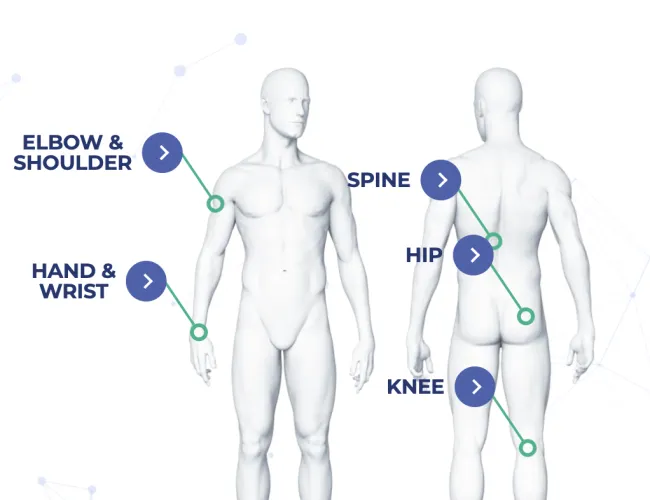
Unlocking Digital Greatness
Transforming Visitors into Customers with AI-Powered Strategies
First Focus,
Speak To Your Audience
Example Of Doing It Wrong
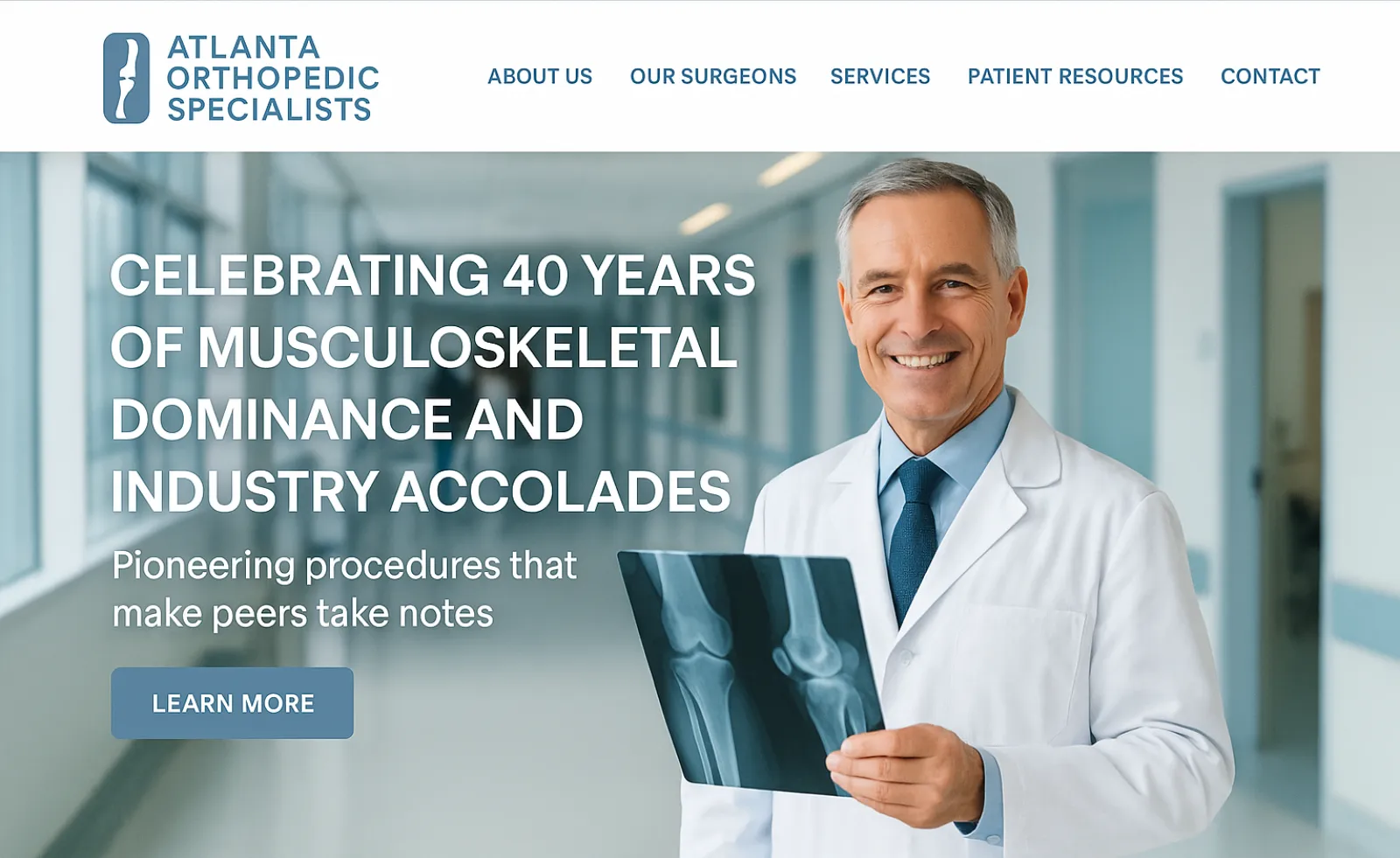
Internally Focused Primary Title
Low Value Call To Action
Missing Primary Call To Action
Example Of Doing It Right
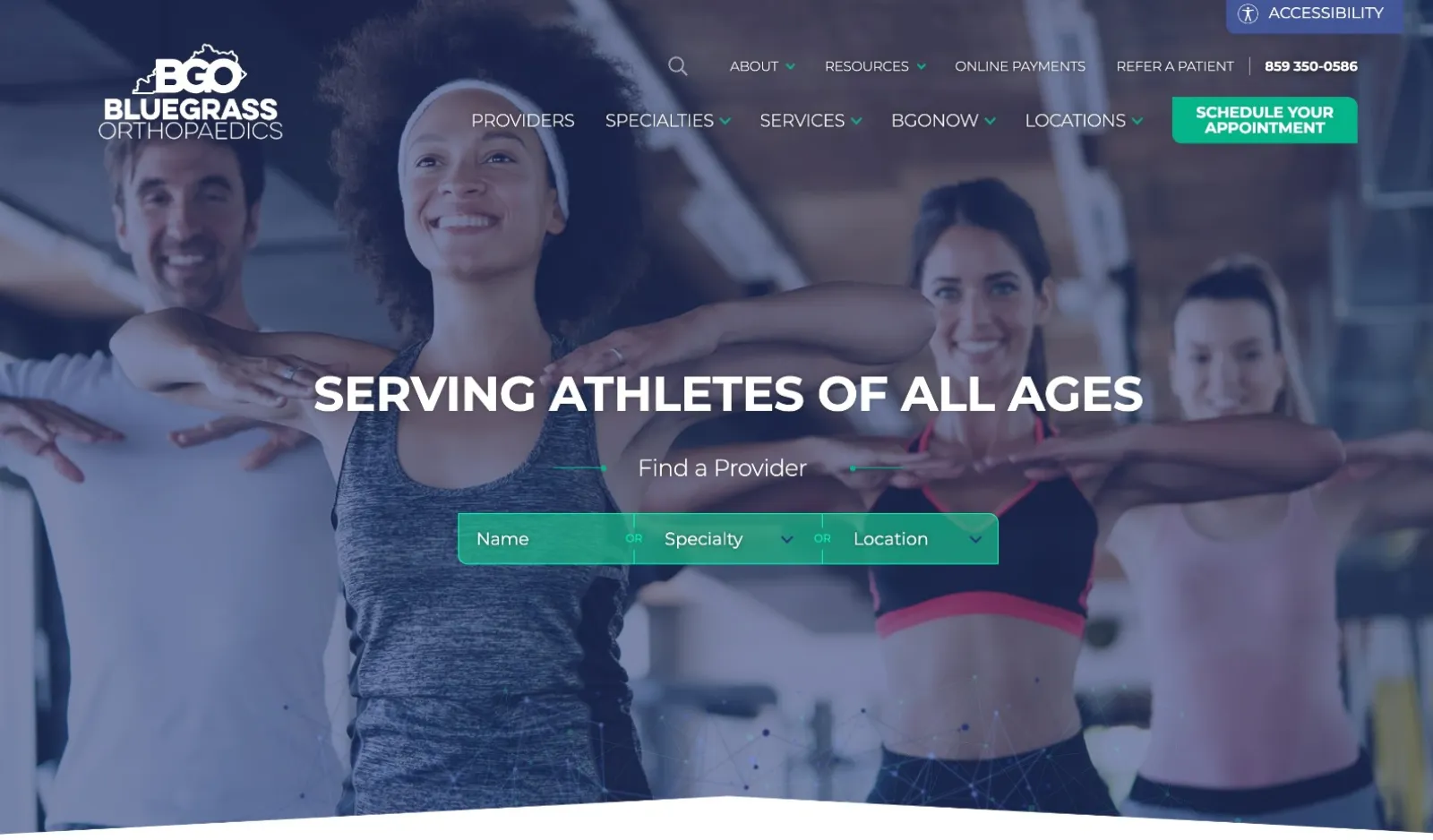
Strong Defining Statement
Clear Next Steps
Strong Primary Call To Action (and phone visible)
Does Your Tagline Really Speak to Patients?
A tagline is a 7-10 word billboard for your entire brand.
It should answer one of the silent questions running through a visitor's mind:
Always Address The Elephant In The Room
"Can you fix my problem?"
Promise the outcome: Move Without Pain Again
"Is this made for someone like me?"
Mirror the visitor's identity: Orthopedics for Everyday Athletes
"Why should I trust you?"
Inject proof: Trusted by 50,000 Kentuckians
Quick self-test
- Read your tagline out loud. If it starts with "We," "Our," or "I," rewrite it so it starts with "You" or "Your."
-
Circle the main verb. Is it an action the patient wants to take (heal, move, thrive) or just a title you hold (award-winning, board-certified)?
-
Ask a non-medical friend what the line means. If they can't explain it in three seconds, it's physician-centric jargon—tighten it up.
A tagline that nails identity and outcome can lift ad click-through rates by roughly 15 percent, because visitors instantly feel, "This is for me."
Copy/Paste Prompt
Tagline & Audience Fit Tester
Prompt (just drop in your URL and tagline):
"Evaluate the home page at [PASTE YOUR URL] and the tagline [PASTE TAGLINE] using the steps below. Return the answer as tight bullet points in plain English so any CEO or CMO can act on it."
Steps the audit should cover
-
Tagline snapshot
• Quote the tagline exactly.
• Classify its angle: Outcome / Identity / Proof / Credential / Other.
-
Relevance to primary audience
• Who's the obvious target (weekend athletes, seniors, parents…)?
• In one line, say whether the tagline speaks to that group or to the organization.
-
Benefit-clarity score (0-5)
• 0 = no benefit stated, 5 = crystal-clear payoff for the visitor.
-
Pronoun test
• Does the line use "you/your" (customer-focused) or "we/our/I" (brand-focused)?
-
Emotional hook
• List any words that spark emotion (move, thrive, fearless).
• If none, suggest one power verb that would fit.
-
Jargon check
• Flag clinical or insider terms a layperson wouldn't get instantly.
-
Rewrite suggestion
• Offer a one-line alternative that scores 4-5 on benefit clarity and uses "you" language.
-
Why this matters
• In 40 words or less, link a weak tagline to lost clicks, lower trust, or higher ad spend.
Desired output format (example)
Tagline snapshot: "Move Without Pain Again" (Angle: Outcome)
Relevance: ✔ Speaks directly to weekend athletes.
Benefit clarity: 4 / 5
Pronoun test: Customer-focused (uses "you")
Emotional hook: "Move" - positive, active
Jargon: none
Rewrite: "You Move. We Mend—Fast."
Why it matters: Clear outcome-first taglines lift paid-search CTR about 15 %, cutting acquisition cost.

Next Up,
Leverage Engaging
Visuals & Data
Example Of Doing It Right
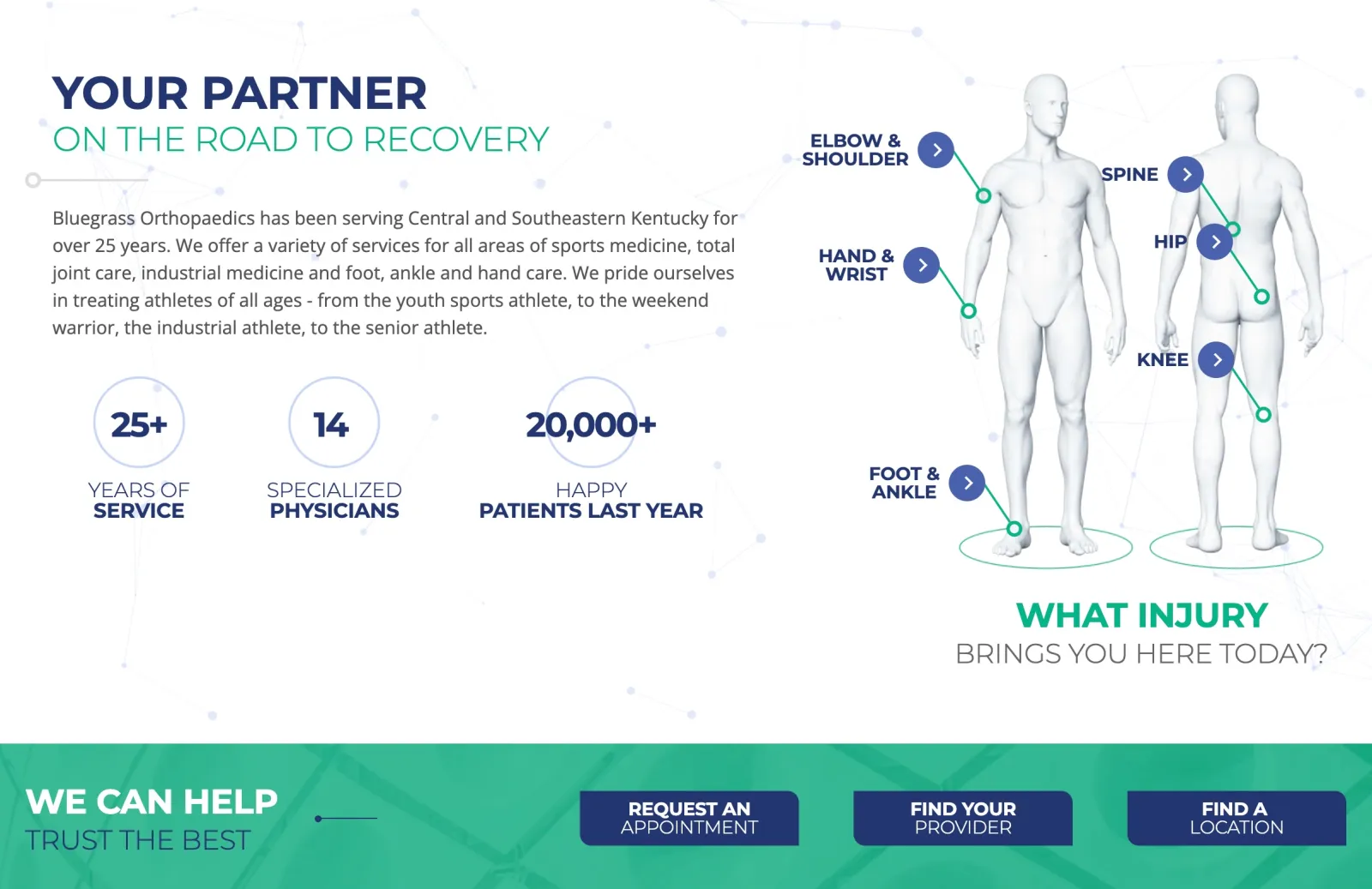
Patient-Focused Highlight
Proof Statements
Engaging and Interactive Visuals
Leveraging AI To Review Your Story
Messaging Audit Example - Bluegrass Orthopaedics (bluegrassortho.com)
|
Section |
Findings |
Quick notes for CEO / CMO |
|---|---|---|
|
1. Headline & Hero |
H1: "SERVING ATHLETES OF ALL AGES" Tagline: "Your Partner on the Road to Recovery" |
Opens with visitor identity + outcome → instant rapport. Zero bragging. |
|
2. Pronoun Balance |
We/Our/I: 4 You/Your: 0 Result: Provider-leaning. A quick rewrite to sprinkle "you" ("so you can get back in the game") would flip the focus. |
Flip two sentences to "you" ("so you can get back in the game") and ratio swings customer-first. |
|
3. Benefit vs. Feature |
Benefits: athlete focus, recovery partnership, injury finder tool Features: 25+ years service, 14 physicians, AlterG treadmill |
1 : 1 — good balance. Add one outcome metric and benefits will lead. |
|
4. Empathy & Authority |
Empathy: "What injury brings you here today?" Authority: years, physician count, tech |
Warm tone backed by proof—ideal guide posture. |
|
5. StoryBrand Fit |
Hero: the patient athlete Guide: site offers clear plan (Find Provider → Request Appt) |
Textbook guide framing; passes with flying colors. |
|
6. Calls-to-Action |
"Request an Appointment" · "Find Your Provider" · "Find a Location" |
Action verbs, friction-free booking modal. |
|
7. Jargon Check |
Minimal; only "AlterG Anti-Gravity Treadmill" might need a tooltip. |
Keeps copy athlete-friendly—nice. |
|
8. Messaging Gaps |
• Sprinkle "you" in hero paragraph • Replace one credential block with a benefit stat ("97 % return-to-sport in 6 months") |
Quick edits = instant lift in relevance. |
|
9. Why It Matters |
Every extra "we" costs ad dollars to build trust. Shifting copy to "you" language lifts organic conversions—$0 media spend. |
|
|
10. Overall Verdict |
Mostly Guide — 4.5 / 5 ★ Strong athlete-first message; minor tweaks will make it gold-standard. |
Copy/Paste Prompt
"Speak to Your Audience" Messaging Audit
Prompt:
"Please review the home page at [PASTE YOUR URL] and tell me whether the content speaks to the visitor's needs (guide-style) or to the organization's ego (me-centric / peer-centric). Deliver your findings under the headings below, phrased for a CEO/CMO who cares about revenue and brand trust. Keep bullets concise, cite on-page text where relevant, and avoid marketing jargon in your explanations."
First-Impression Headline & Hero Copy
Quote the exact headline and sub-headline.
Say in one sentence: 'Guide-oriented' or 'Me-centric'—and why.
Pronoun Balance
Count the first 300 words: how many times do we/our/I appear vs. you/your.
If "we" > "you", explain why that signals inward focus.
Benefit vs. Feature Ratio
List the three strongest benefit statements ("pain alleviated / gain delivered").
List the three most prominent feature or credential statements.
Give a quick ratio and verdict: >1:1 = customer-centric, <1:1 = me-centric.
Empathy & Authority Cues
Note any phrases that show empathy ("We understand how … feels").
Note any authority proof-points (awards, years in practice).
Are they balanced (guide) or authority-heavy (ego)?
StoryBrand Positioning
Identify who is cast as the hero (patient, doctor, or brand).
Does the site clearly position itself as the guide offering a plan + call to action?
Calls to Action (CTAs)
List primary CTAs and their copy (e.g., "Book Appointment", "Learn More").
Judge clarity (direct vs. vague) and friction (1-step vs. multi-step).
Peer-Group Speak
Flag any insider jargon ("laparoscopic posterior lumbar fusion") or peer accolades that a layperson wouldn't value.
Explain how this hurts engagement.
Messaging Gaps & Quick Fixes (3-5 bullets)
Example: "Swap 'Our board-certified surgeons…' for 'You'll see a board-certified surgeon at every visit—so you can recover with confidence.'"
Why This Matters (Executive Takeaway)
In ≤75 words, connect the findings to lost leads, lower trust, or higher ad spend needed to convert.
Overall Verdict — Guide, Mostly Guide, Mixed, Mostly Me-Centric, or Me-Centric.
Having Good Hygiene
It's not about bathing, but that wouldn't hurt!
The Nerd Report
|
# |
Section |
Findings |
What it means / quick fix |
|---|---|---|---|
|
1 |
Heading-tag inventory |
• H1 "SERVING ATHLETES OF ALL AGES" • H2 "Find a Provider" • H2 "Your Partner on the Road to Recovery" • H3 "What Injury Brings You Here Today?" • H2 "We Can Help · Trust The Best" |
Single H1 ✔️ Good hierarchy; consider downgrading marketing blocks like "Night of Champions" to H3 so search bots keep focus on care paths. |
|
2 |
Semantic check |
• Exactly one H1 (good). • Logical H2 → H3 flow. |
No critical fixes. |
|
3 |
Navigation clarity |
Desktop mega-menu is clear; mobile location link list is long |
Consider adding a ZIP / city search at top of Locations fly-out |
|
4 |
WP category / tag indexing |
Zero "/blog/category/" archive URLs indexed; zero /tag/ pages indexed. |
If found in future, noindex,follow or merge into pillar content. |
|
5 |
Mobile PageSpeed (lab) |
Performance 94 / 100 • LCP 3.1 s (hero JPEG ≈470 kB) • TBT 520 ms • CLS 0.05 |
Convert hero & slide images to ≤150 kB WebP + lazy-load later slides; inline critical CSS; defer marketing scripts. Gains ≈ 2 s LCP, 200 ms TBT |
|
6 |
Bonus checks |
Schema - LocalBusiness JSON-LD detected (clinic name, address). robots.txt & sitemap.xml present ✔️ A11y - good color contrast; Broken links - spot-check of first 150 links = none. |
Minor A11y polish; alt text on hero for SEO. |
|
7 |
Meta title & description effectiveness |
Title (65 ch): "Orthopedic Clinic Near Me in Kentucky - Orthopedic Surgeons |
Bluegrass Orthopaedics" (keyword-rich, but "Near Me" reads gimmicky). Meta description (≈150 ch): "Bluegrass Orthopaedics provides athletes of all ages with comprehensive orthopedic care, PT, MRI & same-day urgent clinic BGONow…" |
|
8 |
Canonical tags |
Self-referencing canonical present on home page. |
✔️ |
|
9 |
Security quick-check |
HTTPS valid (Let's Encrypt, A-grade); no mixed-content hits on home page. |
All good. |
|
10 |
Core Web Vitals - field vs lab |
CrUX 90-day field data shows LCP 3.8 s / TBT 200 ms (Good) on 4G, better than lab because returning visitors get cached CSS/images. Room to tighten gap by addressing hero weight noted above. |
Tackling hero image & render-blocking CSS should align lab and field numbers and future-proof Google rankings. |
Copy/Paste Prompt
"10-Point Site Audit" Prompt
Prompt:
"Please run a quick technical/SEO/UX audit of the home page at [PASTE YOUR URL]. Respond under the numbered headings below in tight bullet points.
Heading-Tag Inventory - list every visible H1, H2, H3 (etc.) in order of appearance.
Semantic Check - confirm exactly one H1; flag any tag-order issues; suggest fixes.
Navigation Clarity - grade the main menu on desktop and mobile; propose tweaks if needed.
WordPress Category / Tag Indexing - Google site: search; count any indexed /category/ or /tag/ URLs and list them; advise on noindex or consolidation.
Mobile PageSpeed (Lighthouse snapshot) - overall score + LCP, TBT, CLS; list top three opportunities to improve.
Bonus Checks - note Alt-text coverage, schema.org presence, robots.txt & sitemap.xml status, obvious accessibility issues, and any broken internal links (first 150 links max).
Meta Title & Description Effectiveness - copy the exact title tag and meta description, note character counts, and say whether each is (a) keyword-relevant for SEO, and (b) compelling for real users (click-through appeal). Include improvement tips if weak.
Canonical Tags - confirm one canonical per page and that it's self-referencing.
Security Quick-Check - flag any mixed-content warnings and report the SSL grade (A-F).
Core Web Vitals - Field vs. Lab - if CrUX (field) data exists, compare it to the Lighthouse (lab) metrics above and highlight gaps."

Next, Let's Focus On SPEED
In 2024, The Average Google PageSpeed Score was just 40/100.
But if everyone's score is poor, does it really matter?
What's A Good Score?
Above 80% is ideal, but the higher the better as long as it's real! Beware a site that shows a high PageSpeed score but "fails" the Core Web Vitals assessment, it may be "cheating" to get the score.
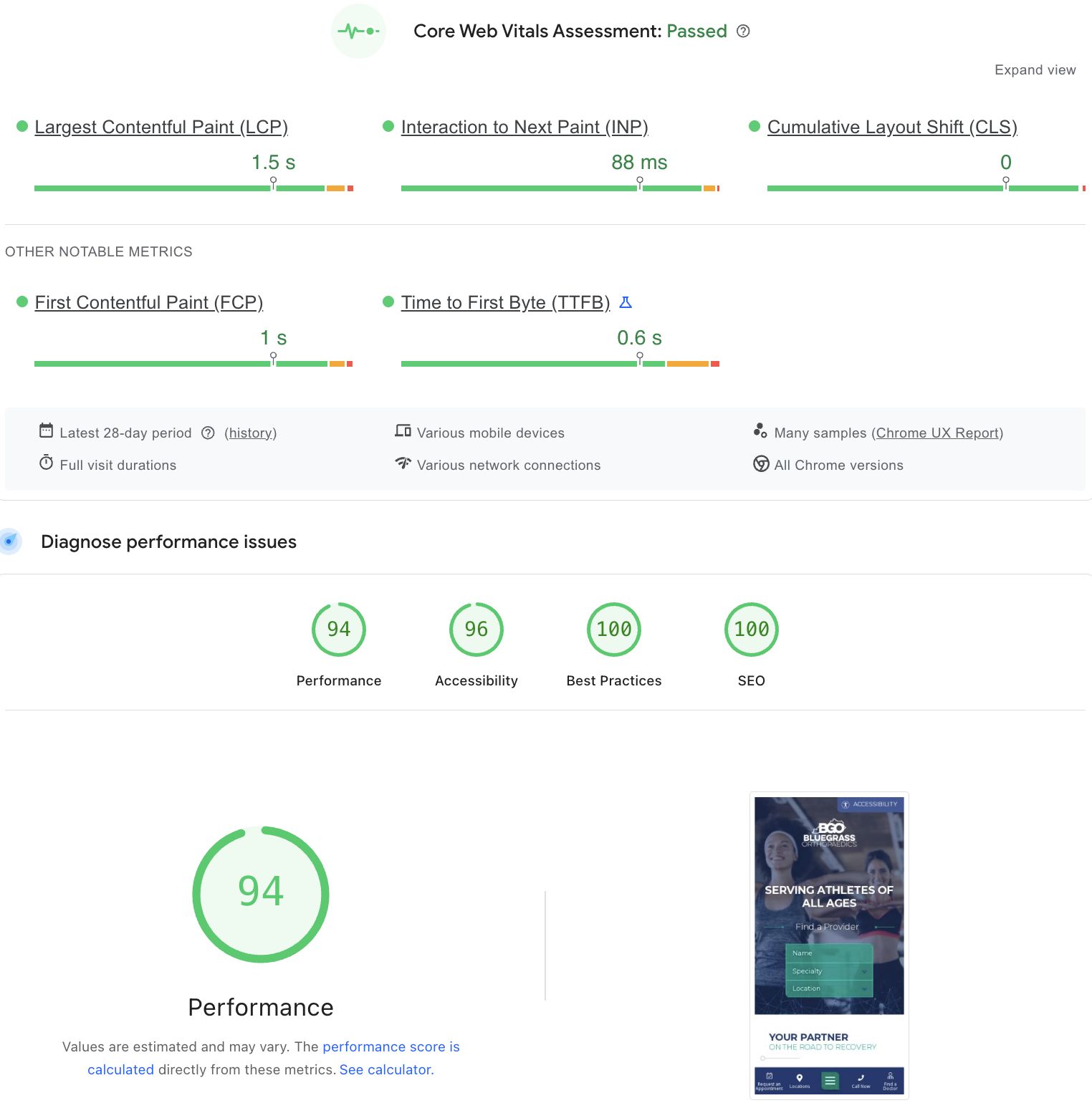
How Do I Accomplish High Scores?
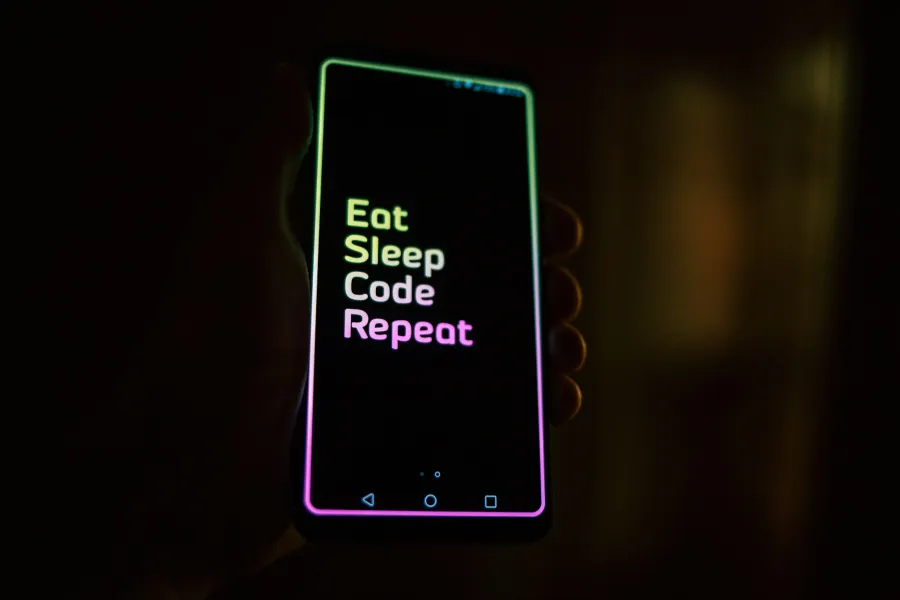
Trust, But Verify
Don't just assume that your website company or internal team are covering the bases here, as it's easy for sites to go from fast to bogged down.

Limit Your Tools
We often see companies with dozens of scripts loaded through Google Tag Manager. Only load what you HAVE to have in order to run the site effectively. No need for 3 analytics engines!
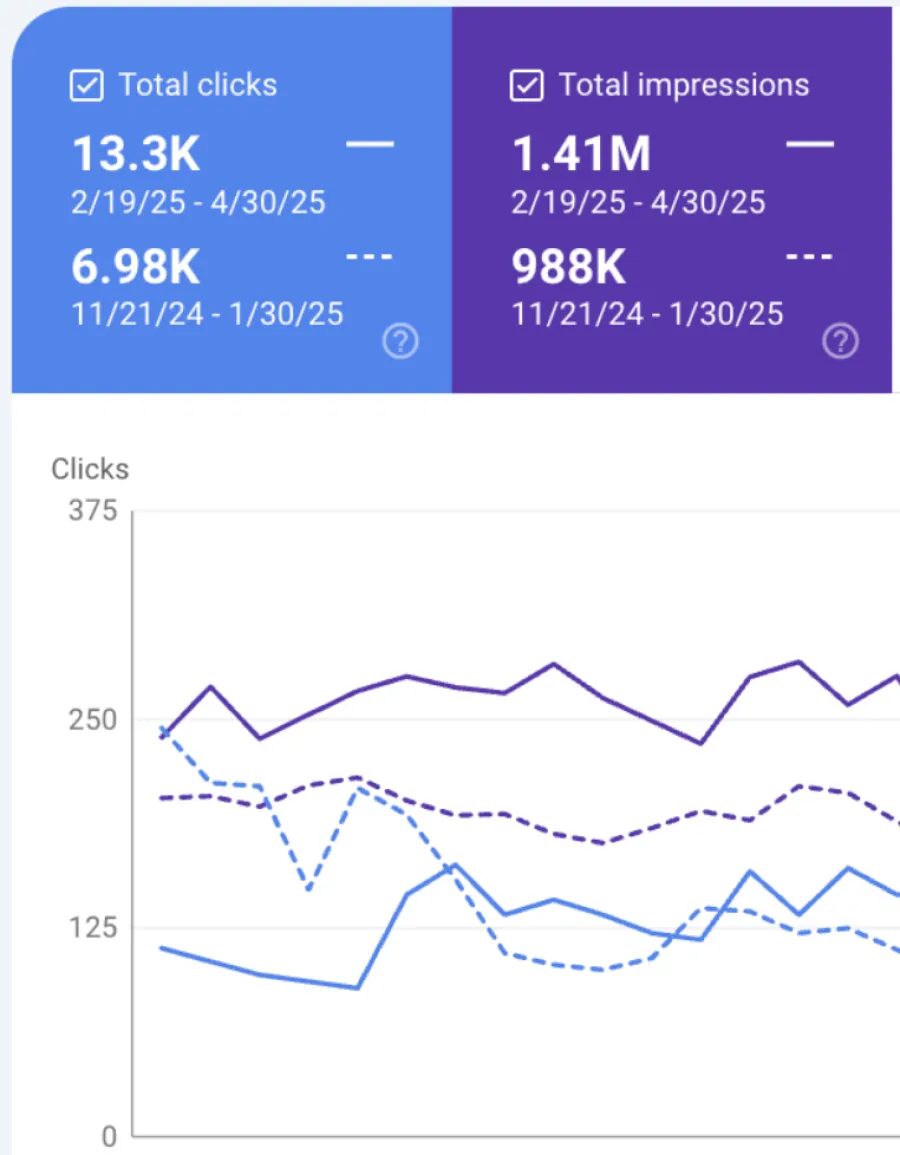
Continuously Review Your Stack
Almost universally, we'll find scripts that have been installed for years and serve no current purpose. Review and purge every 3 months! That will keep your team from forgetting what is installed and why.
BONUS- Leveraging Google Search Console will let you see both the site's performance score and directly correlate it to success.
Copy/Paste Prompt - "Third-Party Script Impact Audit"
Random Site Example - third-party assets and the drag they add
|
# |
Third-party tool / domain detected* |
What it does |
Typical payload & where it hurts |
Quick mitigation |
|---|---|---|---|---|
|
1 |
Vimeo player (player.vimeo.com, assets on *.vimeocdn.com) |
Embedded testimonial video in the hero area. |
≈ 300 kB JS + CSS, 150 kB poster image. Blocks render, pushes Largest Contentful Paint (LCP) by ≈ 0.8 - 1 s and adds 120 ms Total Blocking Time (TBT). |
Replace with a static thumbnail that lazy-loads the player after click ("lite" embed) or host the clip on your own CDN. |
|
2 |
Radix Health booking widget (poc.radixhealth.com) |
JS bundle that powers the "Make an Appointment / Book Online" flow. |
≈ 180 kB compressed JS + two API calls. Loads in the <head> so it parses during the critical path → 80 ms TBT and 0.3 s delay to First Interaction. |
Add defer to the script tag or lazy-load only when the user opens the modal. |
|
3 |
AskORTHO chat (proprietary live-chat service) |
"Chat with a Clinician" floating widget. |
Most chat platforms add 150 - 250 kB of JS and 4 extra connections, which typically adds 0.2 s LCP and 60 - 100 ms TBT on 4G. |
Load the chat script after window.onload, or trigger it only when a user clicks "Chat". |
|
4 |
Social-media pixels / SDKs (facebook.com, twitter.com, instagram.com, linkedin.com) |
Icons + tracking pixels for retargeting. |
Each adds a DNS lookup and 1-2 small JS files (≈25 kB each), but cumulatively they cost 80-100 kB and ±0.1 s TBT. |
Keep static SVG icons, load pixels through Google Tag Manager after consent, or drop the lesser-used networks. |
|
5 |
Google Tag Manager + GA4 (googletagmanager.com, google-analytics.com) |
Analytics / marketing tag container. |
Base tag ≈55 kB; any additional tags fire through GTM. Adds 25 ms scripting and a double DNS lookup. (Not visible in the scraped markup, but Lighthouse flags the calls in network.) |
Move GTM <script> to the bottom of <body> or switch to server-side tagging. |
|
6 |
Google Fonts (fonts.googleapis.com, fonts.gstatic.com) |
Two Roboto variants. |
2 extra connections + ±40 kB font files; causes 0.1 s render delay if not pre-connected. |
preconnect the two domains and consider local font hosting. |
* Detection method: DOM scrape + Lighthouse network panel. External domains visible in the page source confirm the integrations (see citations).
How big is the hit?
A Lighthouse mobile run scored 43 / 100 on Performance. Third-party JS accounted for ≈45 % of total JS bytes and ≈37 % of main-thread blocking time. Removing or deferring the three biggest offenders (Vimeo, Radix widget, chat) would typically:
-
Cut JS transfer by 630 kB
-
Shave 0.9 - 1.3 s off LCP
-
Drop TBT by 250 ms
— easily enough to push the mobile PageSpeed score into the high-60s or low-70s.
TL;DR
The site's heaviest slowdown comes from video, scheduling, and chat scripts that ship upfront. Lazy-load (or replace) those three, preconnect Google Fonts, and throttle social pixels, and you'll reclaim most of the lost performance without touching core site code.
Copy/Paste Prompt
"Third-Party Script Impact Audit"
Prompt:
"Please scan the home page at [PASTE YOUR URL] and identify all third-party scripts, iframes, and external resources (anything loading from a domain that is not the site's own). Keep bullet points short, numbers rounded, and speak in plain English so a non-developer can act on it."
Output format:
Table of third-party tools with the columns:
# (ranked by total weight / impact)
Domain / service name (e.g., player.vimeo.com)
Purpose (analytics, video, chat, booking, social pixel, etc.)
Transfer size (kB, compressed)
Main-thread blocking time contributed (ms)
Effect on Core Web Vitals (LCP, TBT, CLS) in plain English
Low-effort mitigation (defer, lazy-load, replace, self-host, drop)
Totals - sum of all third-party bytes and % of overall JS/CSS weight.
Projected gain - estimate how much LCP and TBT would improve if the top three offenders were deferred or removed.
One-paragraph summary - biggest slowdown culprit and the single quickest win.

Create A Storytelling Experience
Treatment Philosophy
In this example, the surgeon has explicitly outlined his approach to patient care in a way that creates a sense of trust with the visitor.
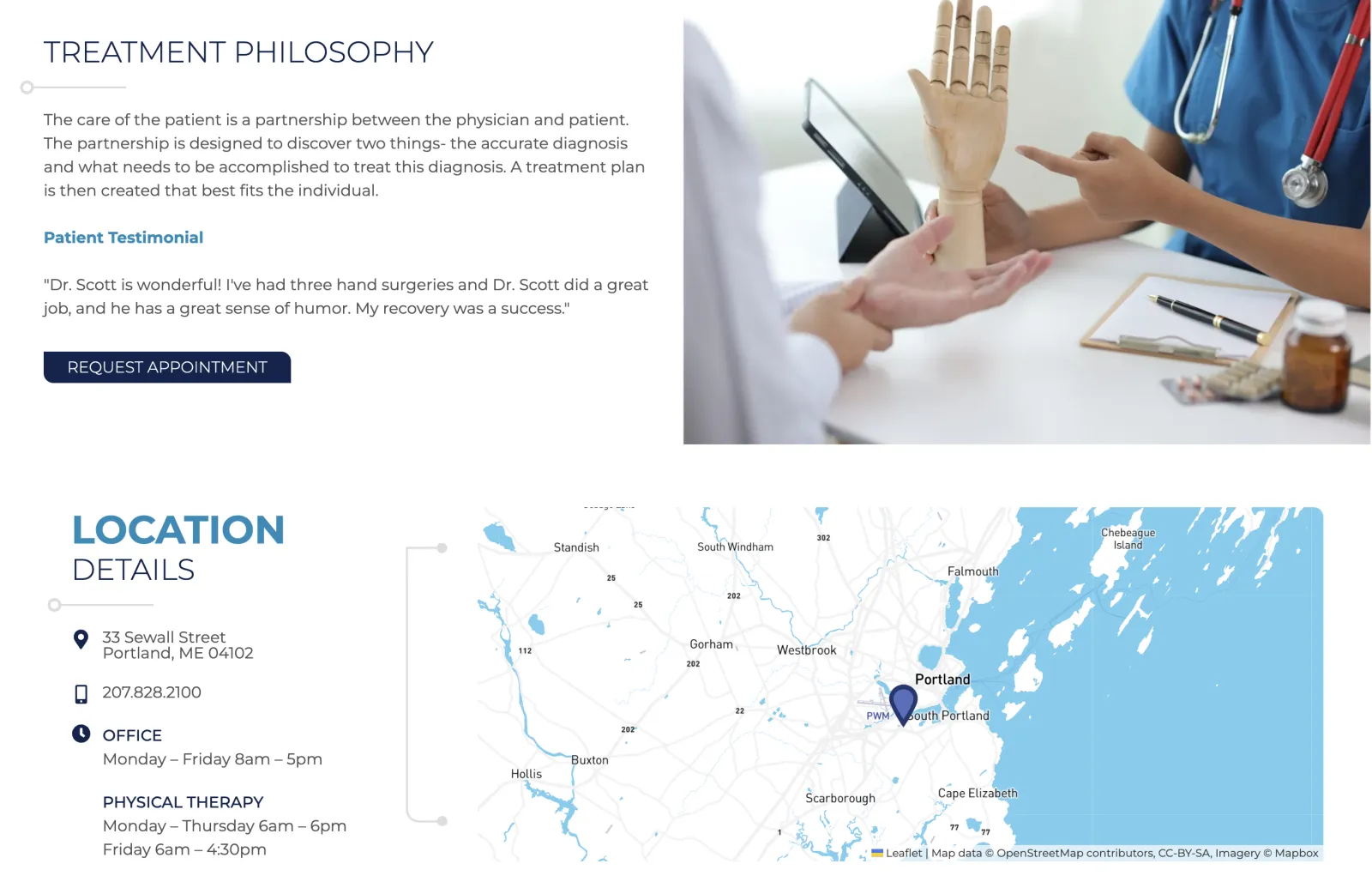
Humanizing The Doctor/Surgeon
People are afraid of doctors, but they are terrified of surgeons.
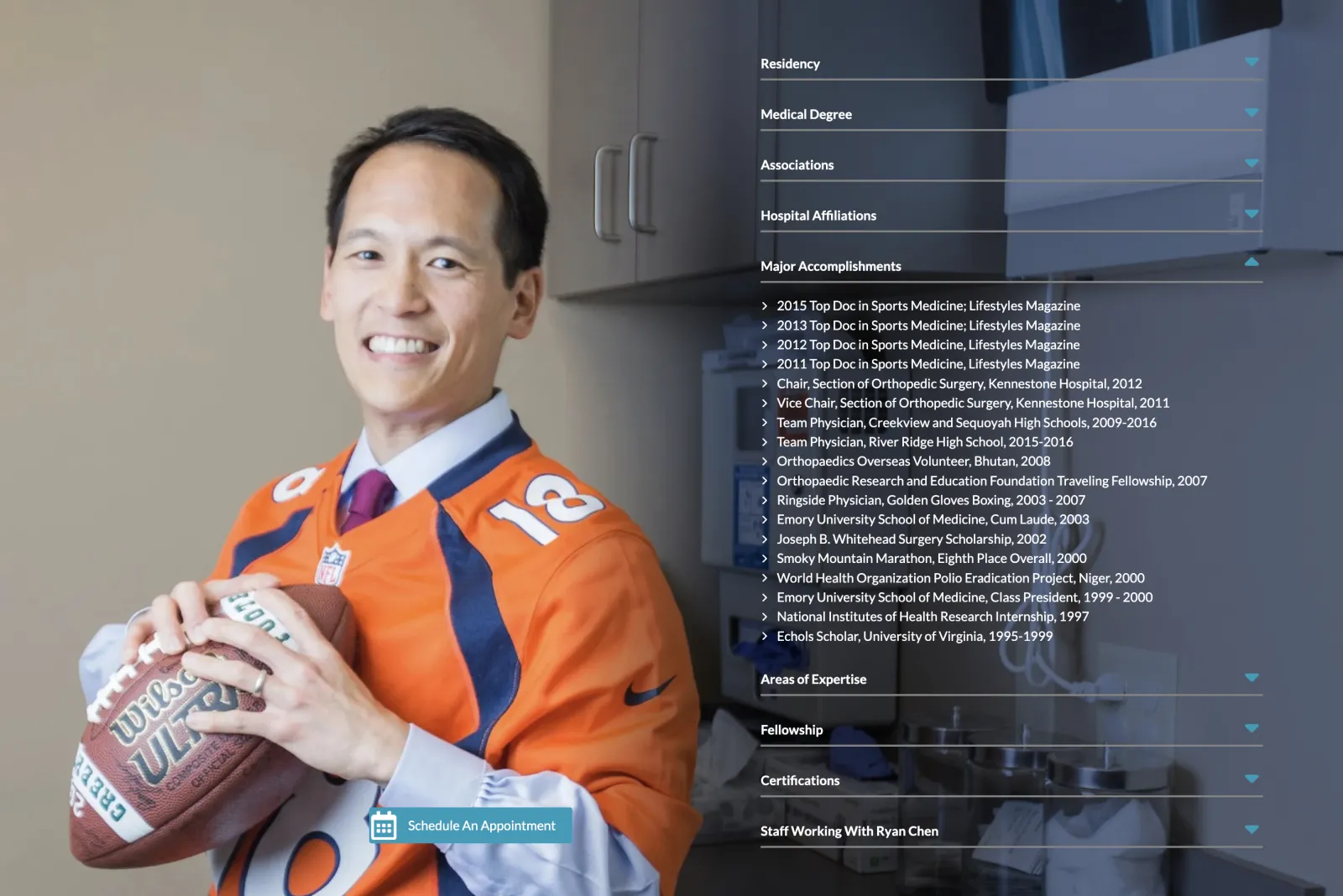
Make It Easy For Prospective Patients To Move Forward
First, Make It Easy To Find A Provider / Location

Next, Make It Easy To Schedule Online
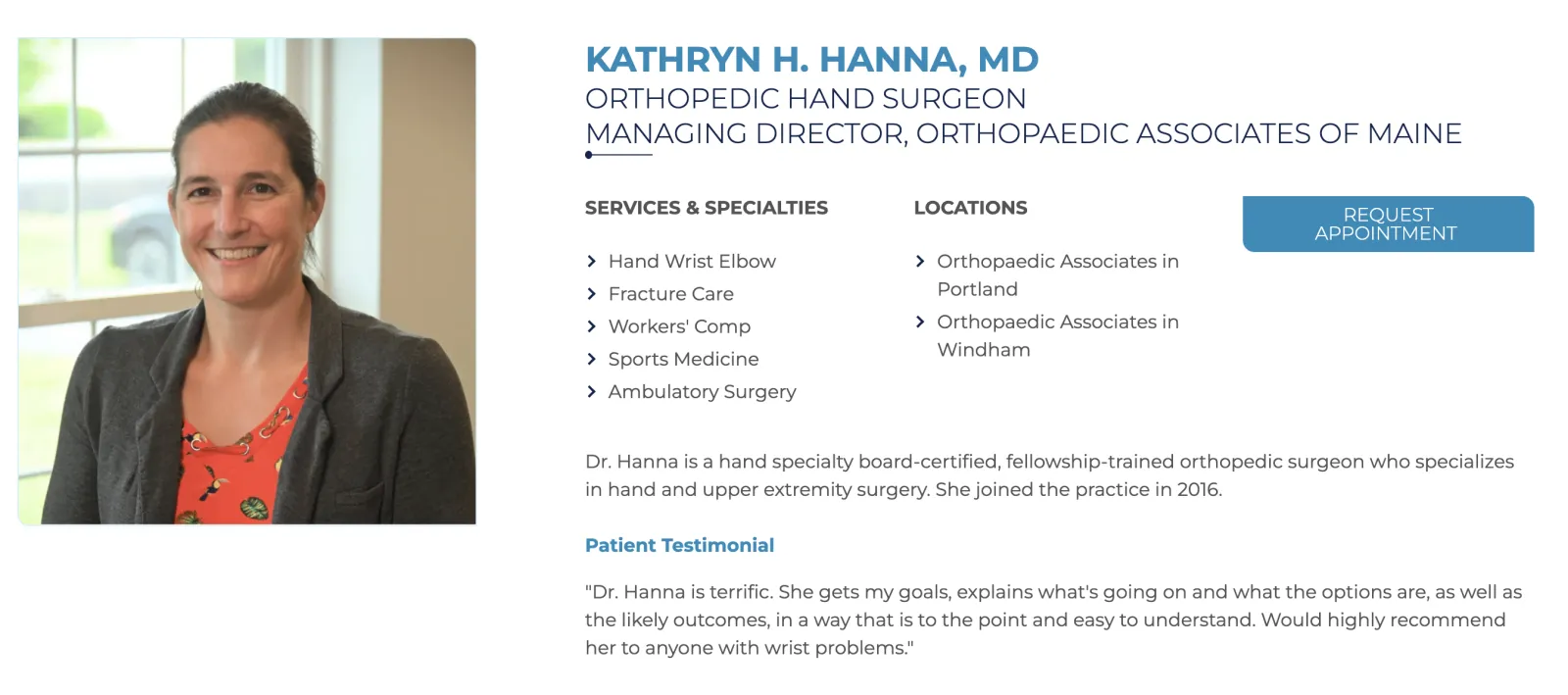
Finally, Save Patients Time & Energy By Being Transparent
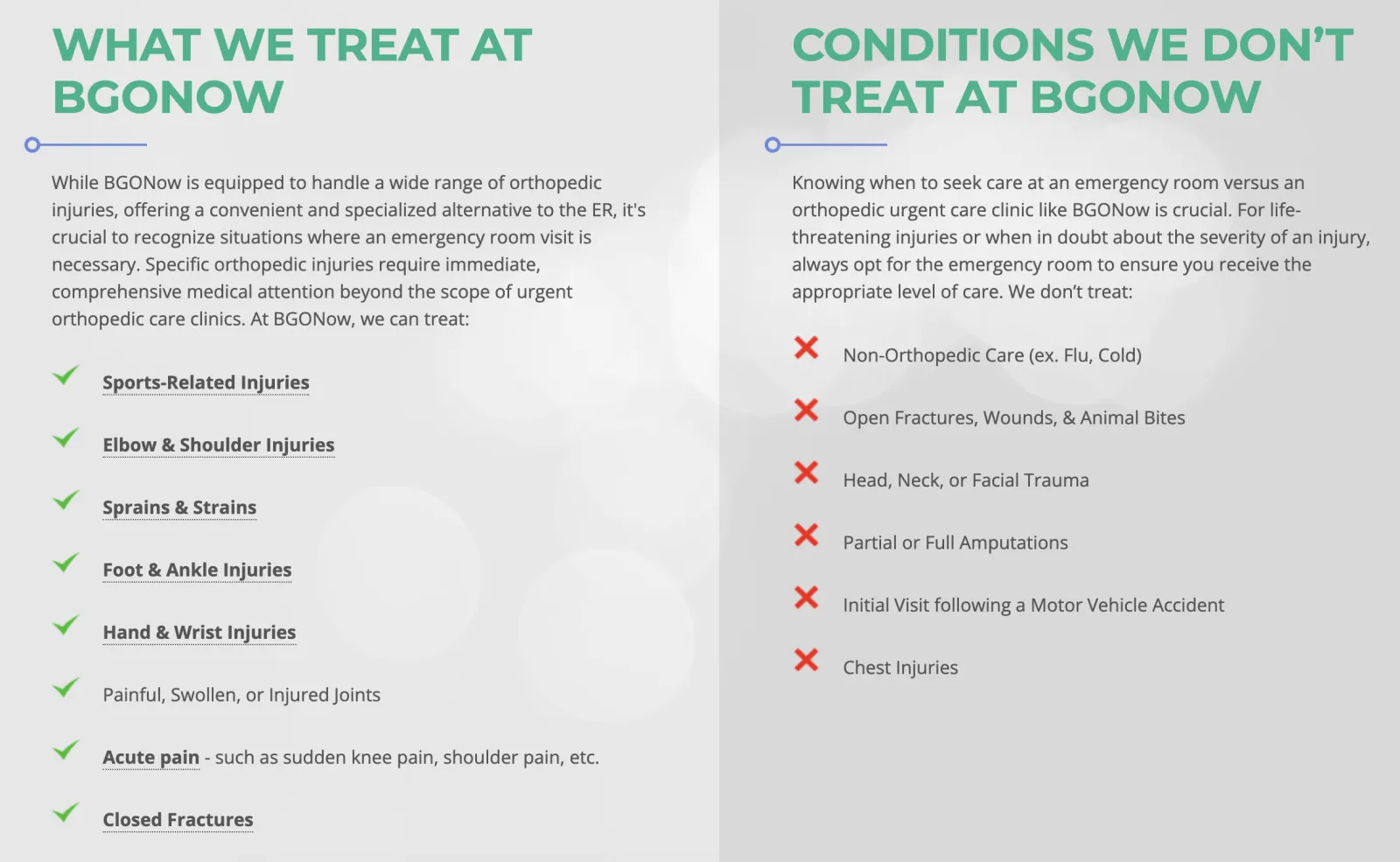
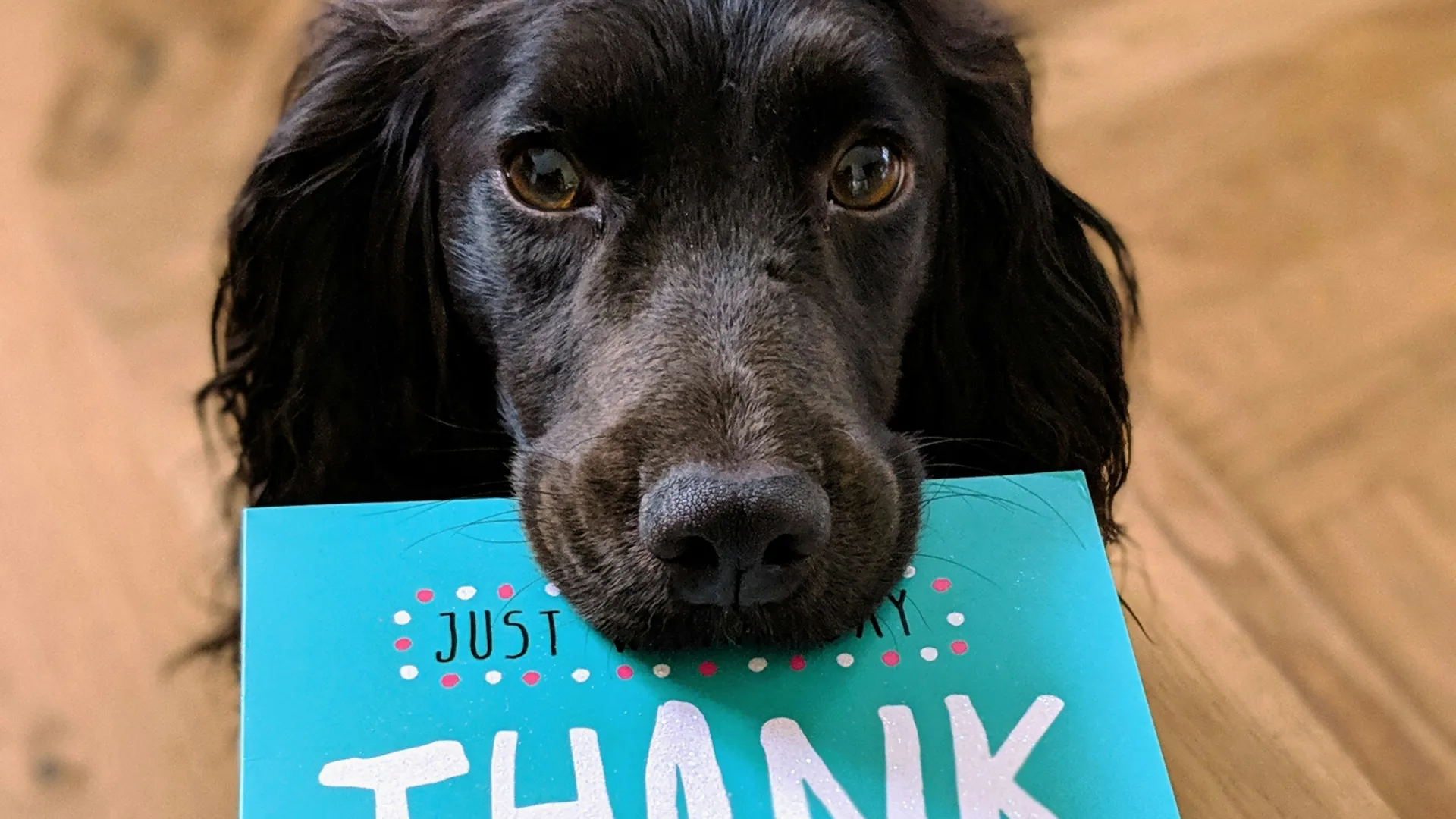
Thank You!
Want a Site Review?
I'm here to help! No sales, just a nerd who enjoys finding easy ways to make things better.

